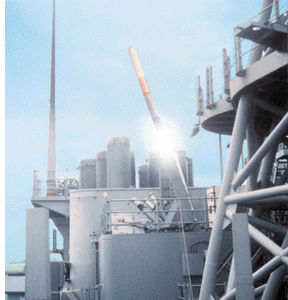JohnWolf
Member
Thanks for the interesting answer.Firstly - I'm an old hand at T, F & FLA's, as it's been part of my day job for the last 25 years, but I had to go n look up what BPMDS was....
Google gave LOTS of answers including "Business Process Modelling, Development and Support", so you can tell it took me a bit of time to get to "Basic Point Missile Defence System (predecessor to NATO Sea Sparrow)"
RIM-162 ESSM - Wikipedia
So....To get back on track - We need to clarify some things...
Point Defence - the last 40 years have taught many lessons to the naval world, due to the variety of wars / skirmishes & one-off incidents that have happened across the globe. Most of this relates to Point Defence being a 'Hail Mary' / last line of defence when all other avenues have failed, with an inbound missile. The technology used has been predominately 'The wall of lead' approach (Phalanx / Goalkeeper / Chinese Type 730 CIWS / Russian AK-630) These all rely on putting large volumes of 20 or 30mm rounds into the path of an incoming missile.
Alternates such as the original Sea Sparrow or possibly Sea Wolf Missiles (used by the UK Royal Navy & numerous others), that utilised deck mounted launchers have been systematically removed / cancelled out by other upgrades in technology, or even the age of the technology itself. The units fitted to 'older hulls' in the 1980's were effectively 'stop-gaps' / band-aids to help the ships do tasking that they weren't initially designed for / as a quick fix to give these ship protection when going into harms way.
From that perspective while there are many warships that have 'split' missile silo's, these magazine predominately carry missiles for self preservation / attack of enemy aircraft, with different missiles designed to attack ships / land targets. The CONOPS methodology has also matured, as enemies have changed, as have the types of attacks that a ship will possibly have to deal with. Even now that whole CONOPS is still being churned to deal with perceived threats from non-national entities, such as extreme groups & pirates.
Going back to BPDMS, based on the details in the wiki-link above, the Sea Sparrow is now effectively ESSM. The issue with this is that to incorporate the system to a ship, you firstly need a have half-decent radar system capable of 3D coverage out to around say 200 miles. Next, the older deck mounted launchers appear to be getting phased out & the optimal load-out is being contained within the Mk41 VLS Launcher set-up, in quad packed launchers. The cost effectiveness of redesigning an older hull to modify it & fit the 'newer' equipment, makes the whole process very cost prohibitive, as bucks spent today fixing older ships/equipment means fewer dollars tomorrow to design & build new vessels.
As for testing / efficacy of 'dual' launchers I don't believe any work will have been done. I'm not stating that in the course of training / live missile firings that it hasn't been attempted, I'm simply stating that if it has, the navies conducting the trials would very likely keep such knowledge to themselves.
The final throes on this comment have been touched on by yourself, in that what does a ship actually gain by firing multiple missiles from multiple launchers across a platform , at a limited target, other than wholly reducing the remaining missile count that may be needed for alternate targets / a second wave ?
There are lots if if's, but's & maybe's in that whole piece which could / would eventually go off on an argumentative tangent, so I believe that we should leave things there...
SA
I was mainly thinking in terms of Guns, and by missile defense I was thinking more of items like the RIM-116.
To be clear; I look at ships that have 1 or 2 CIWS or other systems per facing, and I wonder if they might not be over-worked in the moment or crisis that they were built to cope with.
They don't take up all that much space, so why are there not more being mounted?


